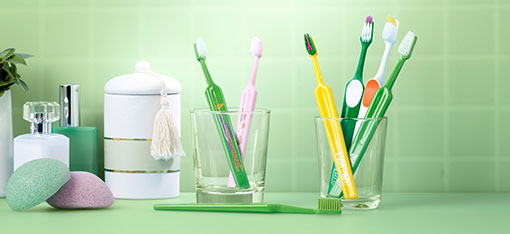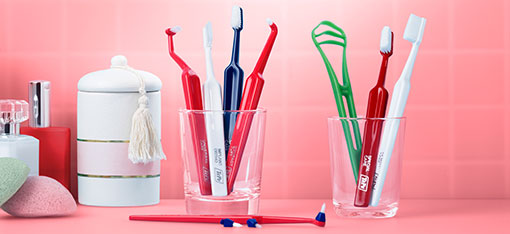Daily Oral Hygiene
Oral health problems are common, painful, costly and preventable
- Tooth decay affects more than one-fourth of U.S. children. Untreated cavities can cause pain, dysfunction, school absences and difficulty concentrating.
- Around 40% of all adults suffer from periodontitis. Advanced gum disease affects up to 12% of all U.S. adults.
- 25% aged 65 or older have lost all their teeth
- Each year, Americans make about 500 million visits to dentists and spend $108 billion on dental services
Let's get serious about good oral health
The Disease Process
Decay
Dental cavities are caused by bacteria. Bacteria produces acids when you consume carbohydrates. Each time sugar enters the mouth, whether in the form of food or drink, the bacteria produces acids which can decay the teeth. In short, every time you eat, the bacteria eat also!
If you don't brush properly, the bacteria will also form plaque. Plaque sticks to tooth surfaces that are hard to clean, especially between the teeth and along the gums. If plaque calcifies and hardens, tartar is formed and bacteria thrive even more! Left untreated, gums become inflamed and can lead to periodontal disease and tooth loss.
If you take good care of your teeth and visit your dentist or dental hygienist regularly, you can keep your healthy smile for a lifetime!
Gingivitis
Gingivitis is defined as the inflammation of the gums. Usually people who have gingivitis have gums around the teeth which are puffy, darker pink to red colored and bleed easily. Having good oral hygiene such as brushing regularly and cleaning the space between the teeth with floss or interdental brushes along with the use of antiseptic mouth rinses can help in treating and resolving gingivitis.
Periodontal Disease
When gingivitis is left untreated, it can progress to periodontitis which refers to bone and attachment loss. Infection around the teeth activates the body's immune response which along with bacterial toxins result in the breakdown of supportive tooth structure including bone and connective tissue which ultimately can result in tooth loss.
Effective Toothbrushing
A quality toothbrush is essential. If the toothbrush is too hard and you are using incorrect techniques, the gums can be damaged resulting in toothbrush abrasion and recession. A worn toothbrush does not clean properly, so change it when the filaments are getting worn. Generally, it is recommended to change your toothbrush every three months or after recovering from an illness. Cleaning your teeth in the same order every day reduces the risk that you will forget some tooth surfaces. A good rule is to start brushing where your problem areas are and to manually brush for 2-3 minutes twice a day. Avoid brushing too soon after a meal, especially after consuming highly acidic foods as the enamel is softened and may be harmed.
Toothbrushing tips
Brush your teeth twice a day using a quality TePe toothbrush. Brush the inside, outside and biting surfaces of the teeth with a fluoride toothpaste.
Once a day, preferably at bedtime and before brushing, clean between the teeth using TePe interdental brushes. A special toothbrush such as the TePe Interspace or the TePe Compact Tuft for cleaning hard-to-reach areas may also be needed.
Clean your tongue using a TePe Tongue Cleaner to help remove additional bacteria.











